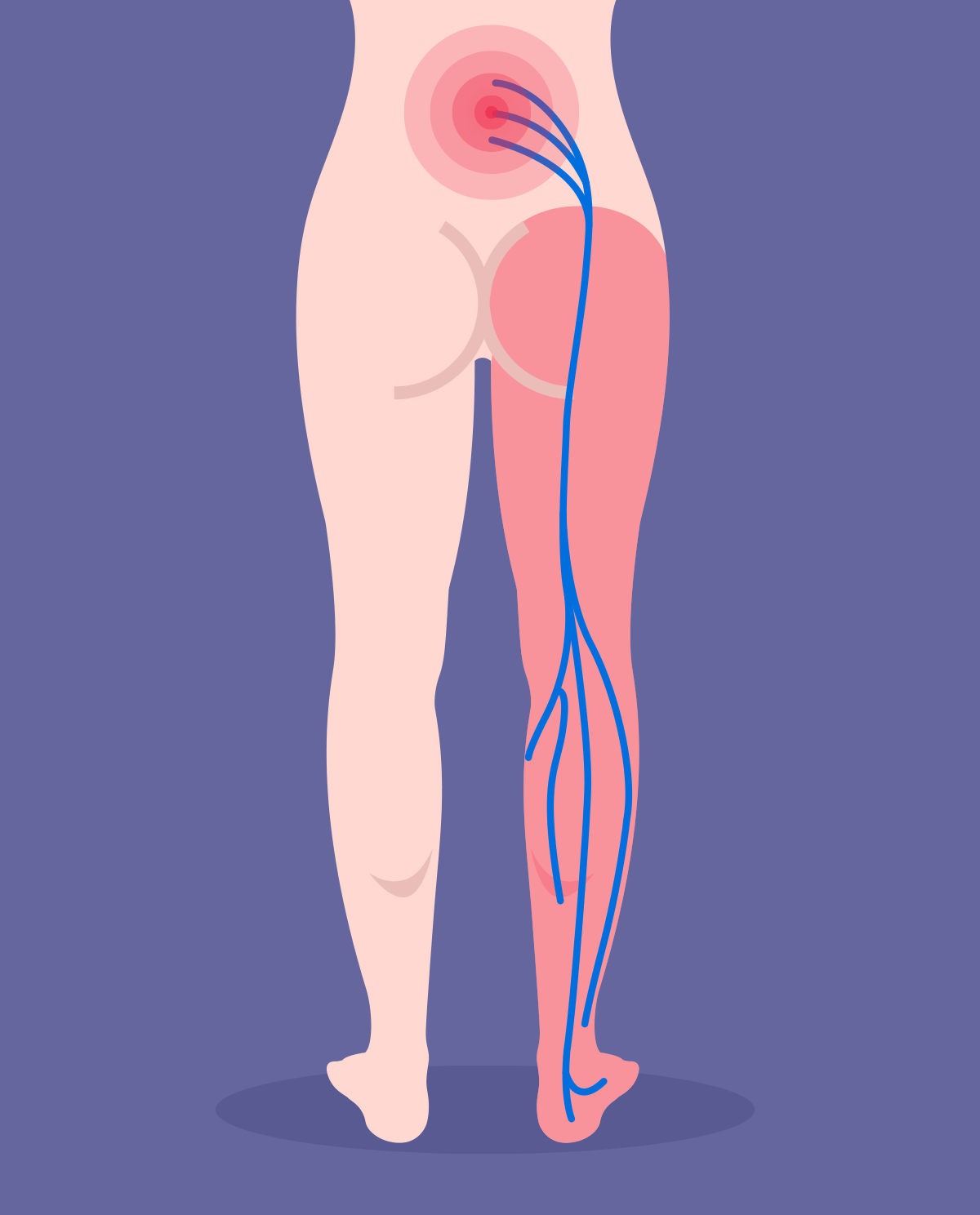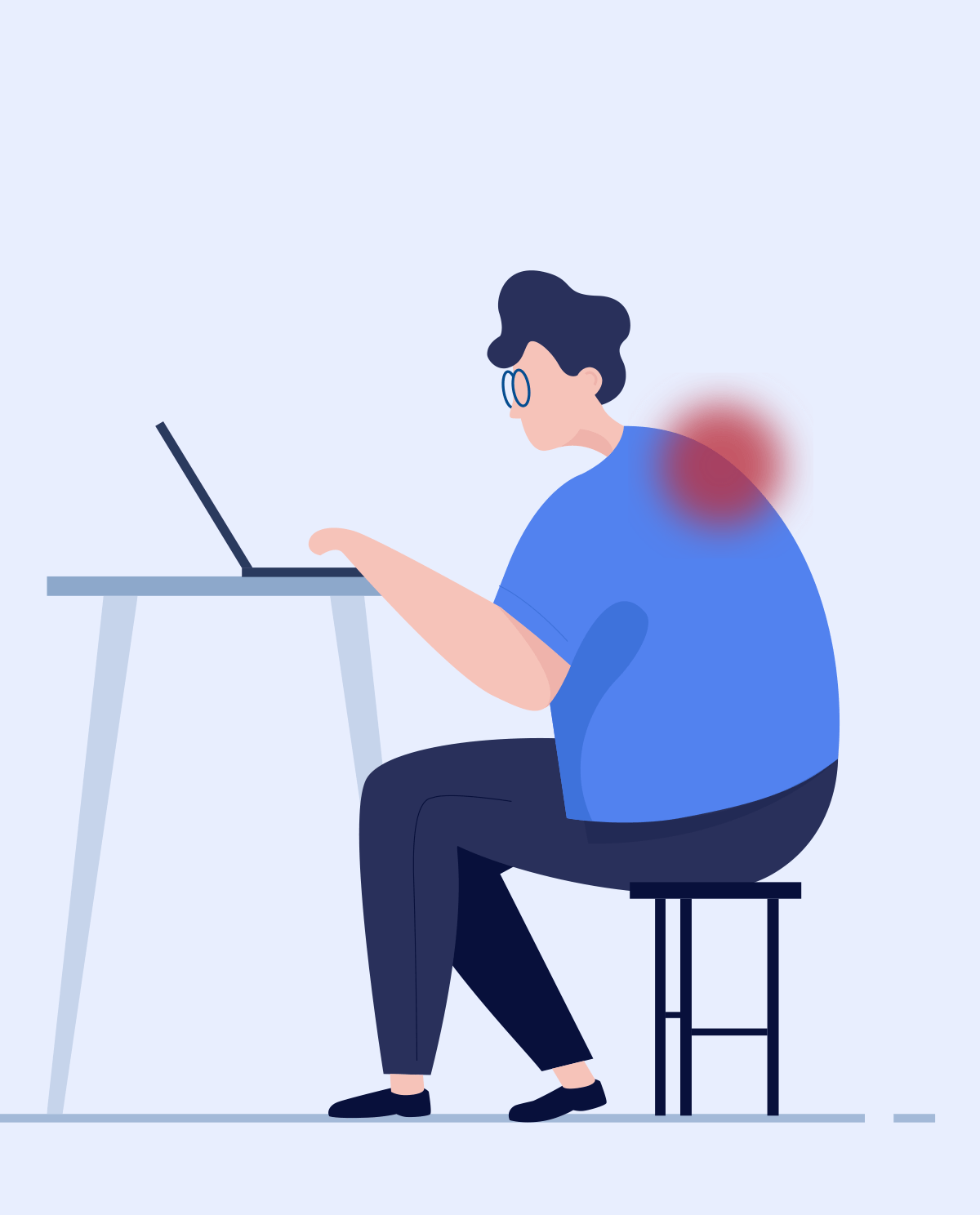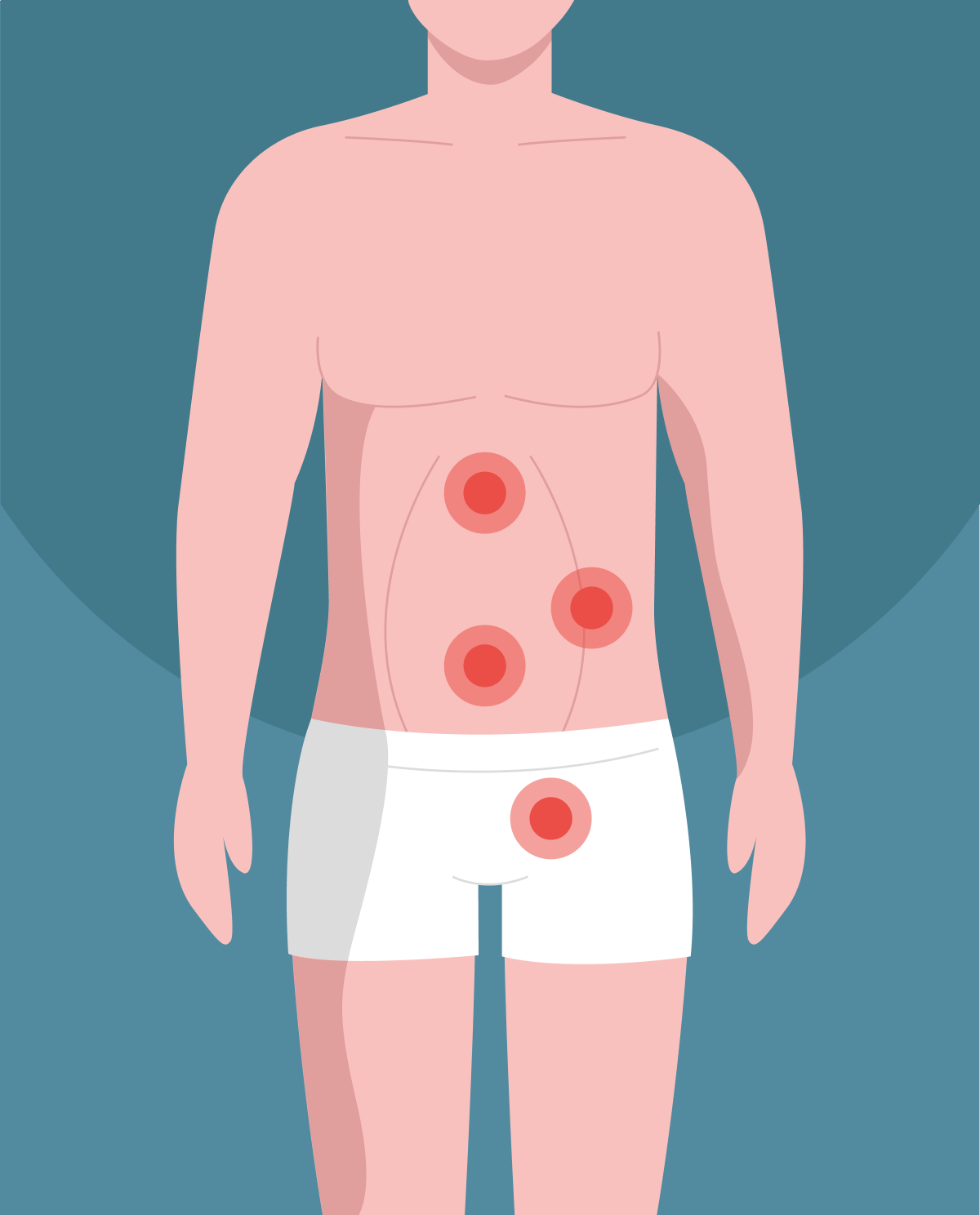What is sciatica?
Sciatica is a set of symptoms. Symptoms that result from pressure on the sciatic nerve around the fourth and fifth lumbar vertebrae and the first sacral vertebra. Irritation of the nerve roots is manifested by severe pain, which can be extensive - from the loins, through the buttock, thigh, lower leg and to the foot.
Causes of pressure on the sciatic nerve
- prominence of the nucleus of the intervertebral disc,
- Pear muscle syndrome,
- stenosis (narrowing) of the spinal canal,
- cancerous changes.
Discopathy
Intervertebral disc
The main role played by the intervertebral disc is the absorption of movements and vibrations. It also ensures adequate mobility and flexibility of the spine and the separation of individual vertebrae.
Its construction consists of:
- fibrous ring - increases resistance to tension in various directions,
- atherosclerosis - minimizes axial loads,
- border plate - connects discs with stem surfaces.
discopathy (degenerative disc disease) is associated with all kinds of irregularities and diseases of the intervertebral disc. They can arise for various reasons:
- metabolic - the disk is not a bloody structure, which makes the supply of nutrients and metabolite metabolism difficult - it is carried out only by diffusion and osmosis.
Importantly, the intervertebral disc mostly consists of water, which is why it is prone to dehydration - it becomes thinner and loses its ability to cushion. As a result of dehydration, protrusions may be formed, i.e. deformations of the nucleus without breaking the fibrous rings.
- biomechanical - poor movement patterns, low physical activity and high axial load on the spine can contribute to the displacement of the atherosclerotic nucleus in one direction, causing the fibrous ring to stretch and deform (as a consequence, a hernia may occur - deformation of the nucleus with ring damage) fibrous)
- genetic - factors responsible for the mutation of disk-building proteins may affect premature degeneration.
Piriformis syndrome
Piriformis muscle
This muscle runs over the sciatic nerve (often the sciatic nerve pierces the piriformis) from the pelvic surface of the sacrum to the trochanter of the larger femur, passing through the larger sciatic hole.
It performs, among other things, a stabilizing function for the hip joint and is involved in the abduction and straightening of this joint. In the range of 0 to 70 degrees, it is responsible for external rotation, while above 70 degrees for internal rotation.
Due to excessive tension of the piriformis muscle, sciatic nerve irritation occurs - the symptoms of this phenomenon may be called pseudo-sciatica.
A common cause of increased muscle tension can be an incorrect lifestyle - e.g. prolonged sitting. However, in some cases, the source of this problem is an incorrect anatomical structure - the sciatic nerve can directly penetrate into the piriformis muscle, which is why it is exposed to changes such as contraction of muscle fibers or inflammation.
Spinal stenosis
Stenosis is called spinal stenosis and is caused by degenerative changes, followed by pressure on the nerve structures. Most often degenerations occur naturally, which is associated with the aging process of the body, therefore stenosis usually occurs in patients over 50 years of age.
Diagnosing
The most important part of sciatica treatment is to know its cause, it depends on the type of rehabilitation and therapy undertaken. Proper treatment gives you a better chance of healing and hence a lower risk of the problem recurring. It is worth having an imaging test (MRI, CT or X-ray) that can help confirm or exclude a given pain origin.
Alarm signals about the need to undergo a medical consultation may be:
-
in the case of discopathy:
- pain when bending down,
- pain when sitting, when the position of the spine is incorrect, hunched, with a rounded lumbar region,
- increasing pain when coughing, sneezing or going to the toilet,
- stabbing pain in the lower limbs, tingling of the lower limb or general weakness,
- positive result of the Straight Leg Raise or Lasègue's Test,
-
in the case of piriformis syndrome:
- pain during prolonged sitting, when the muscle is compressed,
- pain when running or walking long,
- painful reduction of internal rotation in the hip joint,
- pain does not occur in the back, it is only felt from the buttock down,
- muscle palpation test and comparison to the other limb,
- test for piriformis muscle and its assessment of efficiency and short circuit,
-
in the case of spinal stenosis:
- pain during standing for long periods of time, which passes immediately after moving to a sitting position,
- pain when leaning back - it is often easier to lean forward,
- pain when walking.
The presence of the above symptoms may or may not be associated with sciatica - for a proper diagnosis you should visit a specialist doctor.
Exercises
-
supportive exercises for discopathy - basic version and extended version
- Lying on the stomach, we bend the spine, rising up leaning on the ground with our hands. During the exercise, the pelvis must adhere to the ground (10 reps).
- Bending the spine forward in a standing position, asserting with the palms the spine in the lumbar spine (10 reps).
- Stretching of the sciatic nerve - sitting position with legs bent at the knees (hanging down); with the dorsiflexion of the foot, we raise the leg, thereby directing the sight upwards and hold for 5 seconds. When lowering the leg, look down.
- J. Pasek, P. Kwiatek, T. Pasek, S. Szajkowski, A. Szewc, A. Sieroń, The use of magnetic field and optical radiation in the treatment of back pain syndromes, in particular sciatica, Aktualn Neurol 2012, 12 (1 ), pp. 65-68
- https://www.youtube.com/channel/UCty9zs3xys93kx9USnlE7qg
- https://www.e-dyskopatia.pl/
- https://studylibpl.com/doc/788671/biomechanika-in%C5%BCynierska---zak%C5%82ad-in%C5%BCynierii-biomedycznej
- https://fizjoplaner.pl/zespol-miesnia-gruszkowatego.html
- https://www.cmgamma.pl/choroba/stenoza-kanalu-kregowego/









